LG 32GP850
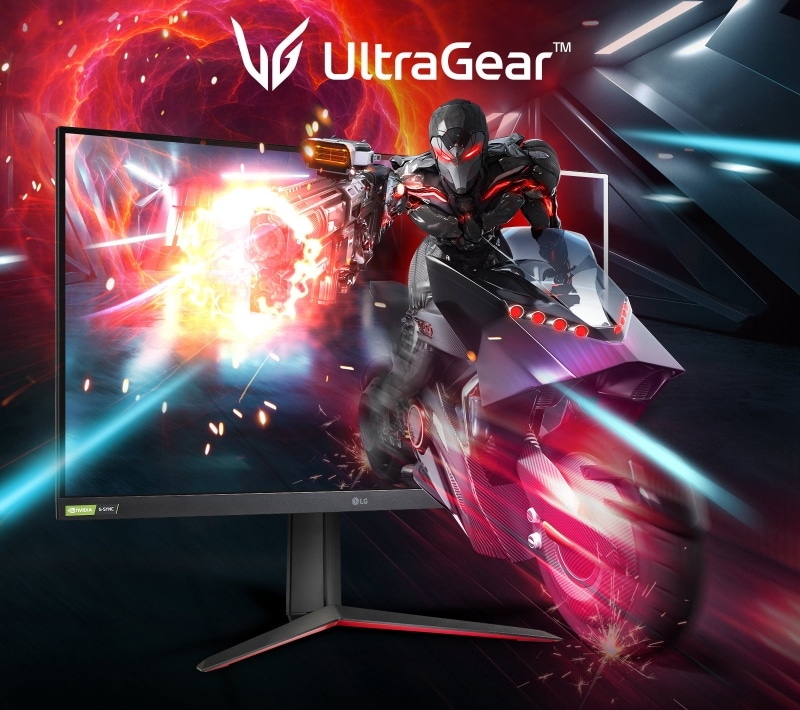
This is a shorter format review but we have included as much of our normal testing and results as we can, especially in relevant areas for this screen. We will of course still be carrying out our normal full, detailed reviews for the most interesting, complex and exciting new screens, but using this short format helps us cover a few additional models in the meantime. An explanation of the results and figures discussed in this short format review can be found at the bottom of the page.
Key Specs and Features
- 31.5″ size, flat format, 16:9 aspect ratio
- 2560 x 1440 resolution (1440p)
- Nano IPS panel
- 165Hz native refresh rate, 180Hz with overclock
- Adaptive sync VRR (inc. NVIDIA G-sync Compatible and AMD FreeSync Premium certifications)
- 1ms G2G quoted response time
- 1ms MPRT blur reduction mode
- Wide gamut backlight with 98% DCI-P3 coverage
- Tilt, height, rotate adjustable stand (no swivel)
- 1x DisplayPort 1.4 and 2x HDMI 2.0 connections
| Check Availability and Pricing – Affiliate Links |
|---|
| Amazon | Overclockers UK |
| TFTCentral is a participant in the Amazon Services LLC Associates Programme, an affiliate advertising programme designed to provide a means for sites to earn advertising fees by advertising and linking to Amazon.com, Amazon.co.uk, Amazon.de, Amazon.ca and other Amazon stores worldwide. We also participate in a similar scheme for Overclockers.co.uk. |
Introduction
The LG 32GP850 is a 31.5” sized monitor aimed at gamers and is part of LG’s UltraGear line-up. It has a 2560 x 1440 resolution Nano IPS panel along with a high native refresh rate of 165Hz. This can be boosted further to 180Hz through an overclocking feature, and this is all supported by adaptive-sync for variable refresh rate (VRR) support from compatible AMD and NVIDIA graphics cards. The screen has also been certified under both the AMD ‘FreeSync Premium’ and the NVIDIA ‘G-sync Compatible’ schemes to give assurances around the quality and performance in VRR mode. Other key specs being promoted by LG for this model are a 1ms G2G response time, although they state this is in the ‘Faster’ response time mode setting which often introduces unwanted artefacts, so we will check that later. There is also a 1ms MPRT strobing blur reduction backlight mode available. The screen also has a wide colour gamut with 98% DCI-P3 coverage quoted in the specs.



The 32GP850 has a 3-side borderless design with a thin ~1.5mm black plastic edge along the sides and top, with an additional 6.5mm black panel border before the image starts. Along the bottom edge is a traditional thicker ~24.5mm black plastic bezel and a thin ~1.5mm black panel border. The stand has a familiar LG UltraGear gaming line-up design with a 2 pronged black coloured foot, with some red coloured trim in places as shown in the provided images. The stand offers tilt, height and rotate adjustments but no swivel unfortunately which is an odd omission from this screen and missed a bit. Adjustments are all smooth and easy although the screen has a bit of a wobble to it when re-positioning. Nothing major though.
For connectivity there are 1x DisplayPort 1.4, 2x HDMI 2.0, 2x USB 3.0 and a headphone connection provided. Note that DP is needed to support the maximum 1440p at 180Hz refresh rate, with HDMI supporting up to 144Hz maximum only. DisplayPort will be the preferred choice for PC gaming anyway, with HDMI then being adequate to support high refresh rates (at 1440p max) from modern games consoles where needed.

The IPS technology panel (LG.Display LM315WQ1) offers the kind of solid all-round performance you’d expect from this panel technology with good colours, a stable image and wide viewing angles that are typical of this technology. The OSD is worthy of a mention as it uses a new software and design compared with other LG gaming screen’s we’ve tested of late. There is a single joystick control on the bottom edge of the screen which makes navigation quick, responsive and intuitive. The software has a fancy new design and provides a good range of options.
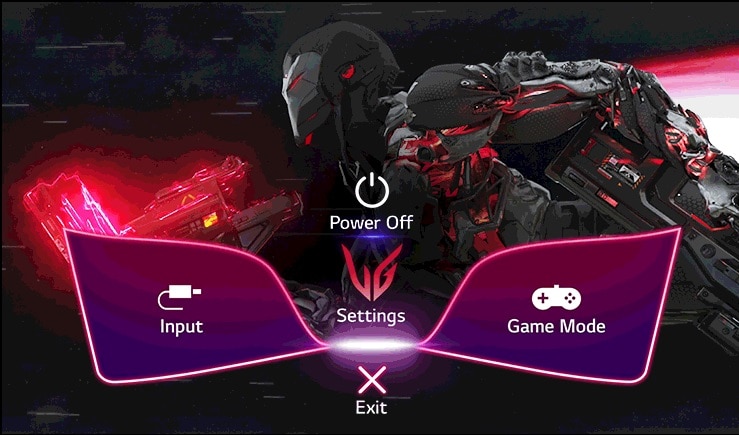


Default Setup and Colours
Note that we turned ‘Smart Energy Saving’ mode off in the OSD before these tests so that brightness and measurements were not impacted. Everything else was at factory defaults to evaluate the out of the box performance.
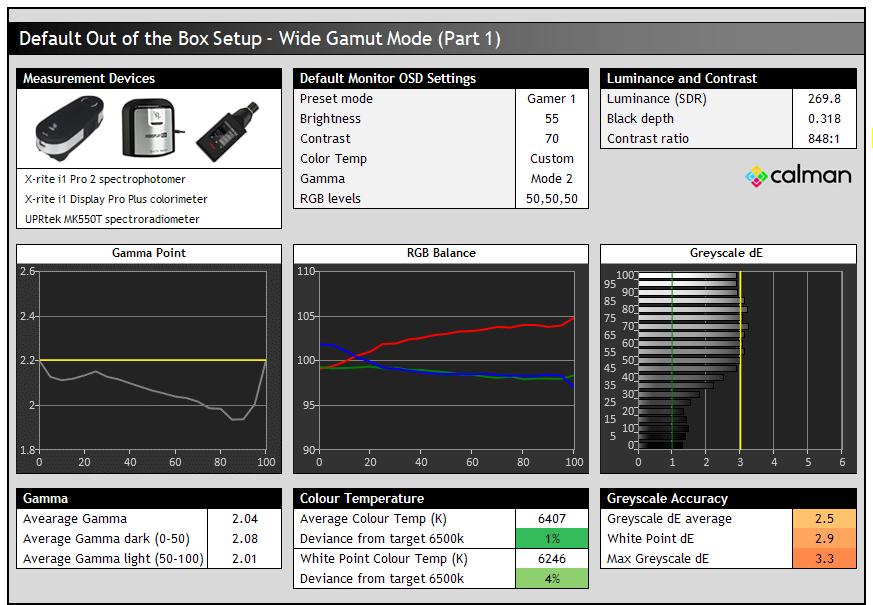
Out of the box setup was moderate overall. The gamma was a bit too low at 2.04 average, and you can see from the graph that this dipped below the target especially in lighter grey shades. We did try the other OSD gamma modes (default is mode 2) and found mode 1 even lower, and mode 3 too high so this was still optimal to stick with mode 2. We did have a decent average colour temperature across all grey shades of 6407k (1% deviance) and a decent white point of 6246k with only a small 4% deviance from our target being slightly too warm but not really something visually noticeable. The static contrast ratio out of the box was 848:1 which is pretty typical for LG.Display’s current generation of Nano IPS panels and a bit behind other modern IPS panels which can can reach up to ~1200:1 nowadays. This was a bit of a weakness of this IPS panel.

The screen has a wide colour gamut thanks to its KSF LED backlight and lives up to its spec, delivering a 98.1% DCI-P3 absolute coverage. This corresponds to about 134% relative coverage of sRGB with the green and red in particular shades extending quite a way beyond the sRGB colour space. Because the screen operates with this wide gamut by default out of the box, accuracy of sRGB colours is of course poor with dE 3.7 average. There is an sRGB emulation mode though that will help here which we will test in a moment.
With the wide gamut backlight there was a reasonable 93.3% coverage of the Adobe RGB reference space available for those who might want to work with colour grading, photos etc in that reference space (and within a colour-managed workflow) although it can’t quite cover the full green range, and still extends a long way beyond the red shades of Adobe RGB. The native colour accuracy relative to Adobe RGB was 2.2 dE average.
This default setup represented a reasonable factory calibration for the target gamer audience, providing vibrant and vivid colours thanks to the wide gamut backlight. Although if you’re wanting to do any more colour critical work, view SDR (sRGB) content or improve accuracy you will need to be able to calibrate the screen ideally.
sRGB Emulation Mode
The screen includes an sRGB preset mode which includes an emulation (or “clamp”) of the smaller sRGB colour space. This can be useful for those wanting to work with standard gamut content and SDR, or just tame the vivid and saturated colours of the native wide gamut.

In the sRGB preset mode you lose access to most of the picture OSD controls although thankfully you still have access to brightness (and if you need it for some reason, contrast). Having the ability to change the brightness is vital for these modes so it was useful to see that included here, although the default brightness was modestly set at 18 producing a 140 nit luminance which was comfortable anyway. Default gamma you can see was much lower than the 2.2 line in darker shades, but the reason for this is that actually an sRGB gamma curve has been configured here. If we re-test relative to an sRGB gamma instead of a fixed 2.2 then this is what we find:

The gamma is pretty close to the sRGB curve in this preset mode out of the box. The RGB balance is pretty good and we have an average colour temp across grey shades of 6816k, being slightly too cool. The white point is 6739k leaving a small 4% deviance from the target and again being slightly too cool. This all results in a moderate dE across the greyscale of 2.8.

The real benefit of this sRGB emulation mode comes in its colour accuracy for working with SDR / sRGB content. You can see on the left that the colour gamut now very closely matches the sRGB reference and we have a 98.8% absolute coverage. There is some very minor over-coverage in blue shades (103.0% relative coverage) but nothing major at all. With the colour space now nicely matching sRGB the accuracy of sRGB colours is obviously massively improved and we see an average dE of only 1.6 which is good. This sRGB mode offers a reliable and accurate setup overall and is certainly usable.
Calibration

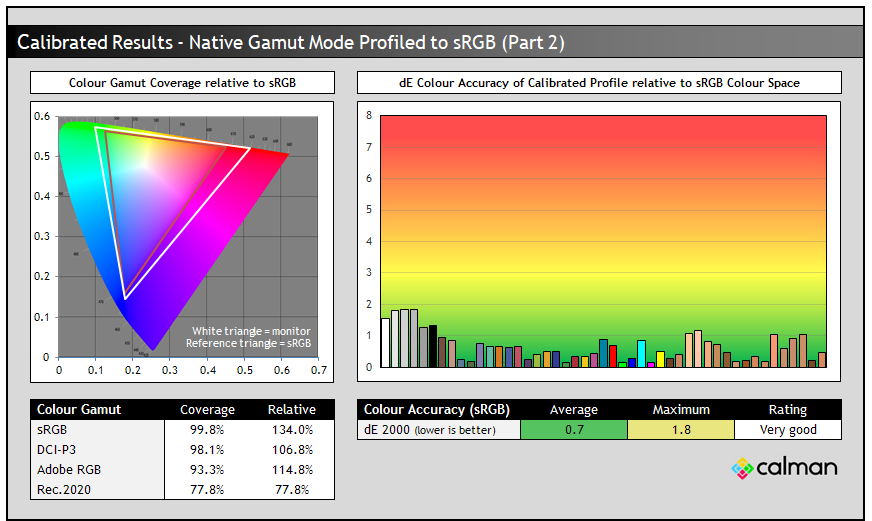
Calibration and profiling can of course produce excellent results if you have a suitable calibration device and appropriate software. Our results are included above, profiling the native ‘Gamer 1’ wide gamut mode to sRGB. You can see the recommended OSD settings above, and if you want you can also try our calibrated ICC profile out.
Gaming
Gaming is obviously the main target usage of this screen and it offers a high refresh rate of 165Hz native / 180Hz with an overclock. The high refresh rate is supported by adaptive-sync for Variable Refresh Rates (VRR) from both AMD and NVIDIA systems. The screen has also been certified under both the AMD FreeSync Premium and the NVIDIA G-sync Compatible schemes to give assurances around the quality and performance in VRR mode. A 1ms G2G response time spec is also offered, and the screen includes a motion blur reduction backlight mode, giving rise to a 1ms MPRT spec.

The 32GP850 is aimed at gaming and so we put it through its paces with our usual range of tests. First of all, we wanted to establish which was the optimal overdrive mode (‘Response Time’ setting in the OSD).

Through various visual tests we were able to quickly determine that the ‘Fast’ mode was optimal, delivering smooth and sharp motion especially at high refresh rates with no visible overshoot artefacts to speak of. To be honest it was very close visually to the ‘Normal’ mode with only slight improvements in motion clarity. The highest ‘Faster’ mode added some unwanted pale overshoot trails in practice we found so is best to avoid.

Testing the screen in this ‘Fast’ mode at a range of refresh rates produced the above response time results. Note that for now these were taken using the traditional G2G response time method which is far quicker to capture for all these different scenarios, and still provides a good comparison point for these purposes. We will test the screen at its optimal settings using our updated ‘gamma corrected’ response time method a bit later too for completeness. You will see that the G2G response time figure remained pretty consistent at all refresh rates, around 4.3ms G2G average. At the higher refresh rates including the native maximum 165Hz and the overclocked 180Hz mode there was no visible overshoot and hardly any detected with our oscilloscope measurements even with this fast response time.
As the refresh rate lowered, the response time G2G remained basically the same, but the overshoot started to creep up as a result. On Native G-sync module screens the included variable overdrive technology is used to tone down the overdrive, reducing G2G response times a little, but helping to avoid overshoot problems. Since that hardware module is not used here, the G2G remains consistent, but overshoot starts to creep up. This only really started to become noticeable at the lower end of the refresh rate range and especially around 60Hz. The ‘Fast’ mode was a bit too aggressive here and you started to get some more noticeable pale artefacts and trails appearing on content.
If you’re using the screen in VRR situations this creates a familiar challenge, where you may want to consider altering the screen’s response time mode depending on your achieved refresh rates. If you are consistently delivering 100Hz+ then stick with the ‘Fast’ mode, the overshoot doesn’t really create any issues at refresh rates above this, and it’s optimal for the higher end refresh rates. If you’re more commonly running at <100Hz then maybe consider dropping to the ‘Normal’ response time mode which helps eliminate the overshoot problems completely, but won’t be quite as crisp and clear at the higher refresh rates should you reach them. To be honest it was very hard to spot differences visually between the Normal and Fast modes at the top refresh rates (see above pursuit camera photos too), so there is a strong argument for just sticking with ‘Normal’ mode for everything. We measured about 1ms G2G slower in Normal mode and saw slightly more blurring on moving content but it was still very fast. If overshoot ever bothers you, or you are hovering around middle refresh rates in VRR maybe just stick with ‘Normal’ mode for everything.

For fixed 60Hz input devices like games consoles and Blu-ray players we would recommend going for the ‘Normal’ response time mode which eliminates all the overshoot problems and is still fast for a 60Hz IPS screen.

We have also provided some measurements from the ‘Fastest’ mode at the max 180Hz refresh rate above out of interest, but you can see the overshoot levels start to become very high here. Close to 1ms is achieved (1.2ms best case) but there is noticeable pale trailing in practice. It’s not too major at the higher refresh rates but only increases as the refresh rate is lowered. This mode doesn’t provide any benefits over the ‘Fast’ mode.

We have also included some measurements using our recently updated ‘gamma corrected’ response time method, which provides measurements that are even more closely representative of perceived motion performance. These were taken at the maximum 180Hz refresh rate and in the ‘Fast’ response time mode. You can see the same excellent performance captured here with an average 4.1ms G2G response time and no visible overshoot (a bit more starts to appear as refresh rate lowers as explained above). We should note also that there is excellent refresh rate compliance here, with 83% of the measured pixel transitions fitting within the 180Hz refresh rate window, and helping avoid any additional smearing as a result.
The response time performance of the 32GP850 was excellent and we were impressed by the motion clarity. You can see from the results round up table as well that the screen had super-low input lag (0.15ms estimated signal processing lag) so there were no issues there for fast paced or competitive games.
Overclocking and Blur Reduction Modes
We wanted to briefly touch on the overclocking feature which is accessed via the OSD menu. Once enabled you can then select 180Hz from your graphics card control panel. You need to note a few behavioral oddities here. If you enable the overclock mode the adaptive sync option is no longer available to change and locked to always on (extended range). Probably desirable anyway. You cannot use the blur reduction mode in 180Hz mode either, that is greyed out. In fact, the Motion Blur Reduction setting is not available if you have adaptive-sync enabled either, which means that if you want to turn that on to use it you might have to disable overclocking first, then also disable adaptive-sync before you can turn blur reduction on. That’s a bit time consuming and annoying if you want to perhaps use VRR and the overclock most of the time, but occasionally turn on the blur reduction mode for certain games. It would be useful if you could just turn on blur reduction whenever, and it would auto turn off the other things if needed (then turn them back on when you disabled blur reduction again).

The Motion Blur Reduction mode is available only at fixed refresh rates of 120, 144 and 165Hz (over DisplayPort). It is not available in the Overclocked 180Hz mode, or when using adaptive-sync VRR. This mode worked well to reduce perceived motion blur and provide a sharp and easy to track moving image. It had low levels of strobe cross talk and ghosting to the image as you can see from the pursuit camera photos above too which was good. You still have access to the response time control, but the ‘Fast’ mode is optimal at all the supported refresh rates. The screen is also capable of being pretty bright if needed with this mode enabled, at ~212 nits max.
1440p on a 32” screen?
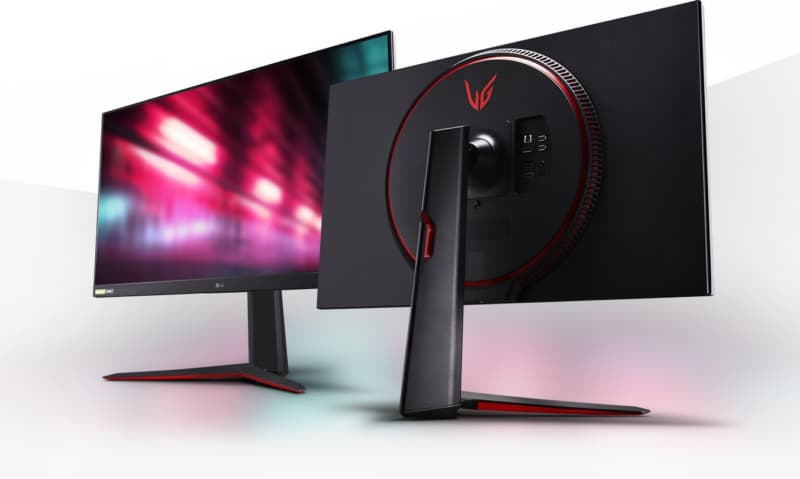
The market is seeing a real push in this space for 32” 1440p displays and they are winning us over we have to say. The text and font size are still perfectly comfortable to use and sharp even at this larger screen size for general and office uses, and certainly no issue for gaming and multimedia.
The good thing is that by sticking with 1440p you are avoiding the heavy system demands, and importantly avoiding the cost bump, that a 4K resolution would bring. 1440p gaming is increasingly popular, a nice step up from 1080p for sure and it works fine on a 32” sized screen just like it would on the wide range of smaller 27” 1440p displays that have been around for years. The extra screen size gives you a bit more immersion for PC gaming up close without being too large, and brings better flexibility if you want to sit a bit further away or for console gaming and movies. Few systems and games are really ready for high refresh rate 4K gaming so this is a nice middle ground and we have enjoyed the combination.
For office work the pixel pitch and font size is identical to a 24” 1080p resolution display which is comfortable and easy to use, without being to large that it loses clarity. It might not look quite as sharp as a 27” 1440p display, but it’s perfectly usable and many people may even prefer it.
Movies and “HDR”
Movie viewing is also improved thanks to the larger screen size as we’ve said above. Viewing angles are wide thanks to the IPS panel although there is the familiar “IPS glow” on darker content when viewed from an angle which is a shame.
We will give brief mention to the “HDR” capabilities of this display. The screen is not actually certified to any of the VESA DisplayHDR standards, not that it really matters relative to the lowly HDR 400 criteria. Here the 32GP850 has no backlight local dimming, and so cannot improve the dynamic range. It will accept an HDR10 input source, and has a peak brightness up to around 435 nits in our measurements – which means it could have passed the HDR 400 criteria in fact! There is at least a wide colour gamut and also 10-bit colour depth support (at all refresh rates at 1440p) so there are some colour enhancements offered for HDR content and a modest peak brightness.
Conclusion

The 32GP850 was another solid outing from LG in their UltraGear gaming line-up. We are enjoying the launch of more 32” 1440p gaming displays and it is likely to be a sweet spot for many users – a larger screen with comfortable text size but without the demands on your system, and the increased cost that high refresh rate 4K would bring. The response times of the panel were excellent and motion clarity was very good thanks to the high refresh rate. The overclocking mode worked fine, giving a small but welcome boost to frame rates and motion clarity. VRR support for both AMD and NVIDIA users is as welcome as ever along with relevant certifications to give assurances on the performance, and the input lag was also ultra-low as you’d hope for from a gaming display. Blur reduction modes can be a bit hit and miss but we felt this one worked nicely and provided a clean and sharp image too.
The strong all round performance from the IPS panel produced a very good picture quality with the ability to work with the native wide gamut if you like the boosted colours or are using relevant content, while also being able to use the decent sRGB emulation mode if you’d rather. Contrast ratio was a little lower than some other modern IPS panels and remains a limitation of LG.Display’s recent Nano IPS generation it seems. It wasn’t terrible though, just could have been a bit higher.
All in all if you’re looking for a larger screen size for gaming then this is a very good choice and well worth checking out. It is available in most regions now from Amazon (use this link to check your local store pricing and availability), and also in the UK from Overclockers UK

If you enjoy our work and want to say thanks, donations to the site are very welcome. If you would like to get early access to future reviews please consider becoming a TFT Central supporter.
| Check Availability and Pricing – Affiliate Links |
|---|
| Amazon | Overclockers UK |
| TFTCentral is a participant in the Amazon Services LLC Associates Programme, an affiliate advertising programme designed to provide a means for sites to earn advertising fees by advertising and linking to Amazon.com, Amazon.co.uk, Amazon.de, Amazon.ca and other Amazon stores worldwide. We also participate in a similar scheme for Overclockers.co.uk. |

Testing and Results Explained
We will test and measure a range of aspects of these displays. By way of a brief explanation of what some of the results mean we thought we’d include this short guide:
Results Round-up section
- Maximum and minimum brightness – the full range in which the backlight can be adjusted using the monitor’s brightness control. At the upper end this can be important for gaming from a further distance, especially in brighter rooms and the daytime. At the lower end this can be important if you are using the screen up close for more general office-type work, especially in darker room conditions or at night.
- Recommended brightness setting – to achieve approx 120 cd/m2, which is the recommended luminance for LCD monitors in normal lighting conditions
- Flicker free – independently tested and confirmed whether the screen is flicker free or not and without PWM at all brightness settings
Setup and Measurements Section

Performance is measured and evaluated with a high degree of accuracy using a range of testing devices and software. The results are carefully selected to provide the most useful and relevant information that can help evaluate the display while filtering out the wide range of information and figures that will be unnecessary. For measurement we use a UPRtek MK550T spectroradiometer which is particularly good for colour gamut and spectrum measurements. We also use an X-rite i1 Pro 2 Spectrophotometer and a X-rite i1 Display Pro Plus for measurements in various ways. Various software packages are incorporated including Portrait Displays Calman Ultimate package. We measure the screen at default settings (with all ICC profiles deactivated and factory settings used), and any other modes that are of interest such as sRGB emulation presets. We then calibrate and profile the screen.
The results presented can be interpreted as follows:
- Greyscale dE – this graph tracks the accuracy of each greyscale shade measured from 0 (black) to 100 (white). The accuracy of each grey shade will be impacted by the colour temperature and gamma of the display. The lower the dE the better with differences of <1 being imperceptible (marked by the green line on the graph), and differences between 1 and 3 being small (below the yellow line). Anything over dE 3 needs correcting and causes more obvious differences in appearance relative to what should be shown. In the table beneath the graph we provide the average dE across all grey shades, as well as the white point dE (important when considering using the screen for lots of white background and office content), and the max greyscale dE as well.
- RGB Balance and colour temperature – the RGB balance graph shows the relative balance between red, green and blue primaries at each grey shade, from 0 (black) to 100 (white). Ideally all 3 lines should be flat at the 100% level which would represent a balanced 6500k average colour temperature. This is the target colour temperature for desktop monitors and the temperature of daylight. Where the lines deviate from this 100% flat level the image may become too warm or cool. Beneath this RGB balance graph we provide the average correlated colour temperature for all grey shades measured, along with its deviance from the 6500k target. We also provide the white point colour temperature and its deviance from 6500k, as this is particularly important when viewing lots of white background and office content.
- Gamma – we aim for 2.2 gamma which is the default for computer monitors. A graph is provided tracking the 2.2 gamma across different grey shades and ideally the grey line representing the monitor measurements should be horizontal and flat at the 2.2 level. Depending on where the gamma is too low or too high, it can have an impact on the image in certain ways. You can see our gamma explanation graph to help understand that more. Beneath the gamma graph we include the average overall gamma achieved along with the average for dark shades (0 – 50) and for lighter shades (50 – 100).
- Luminance, black depth and Contrast ratio – measuring the brightness, black depth and resulting contrast ratio of the mode being tested, whether that is at default settings or later after calibration and profiling.
- Gamut coverage – we provide measurements of the screens colour gamut relative to various reference spaces including sRGB, DCI-P3, Adobe RGB and Rec.2020. Coverage is shown in absolute numbers as well as relative, which helps identify where the coverage extends beyond a given reference space. A CIE-1976 chromaticity diagram (which provides improved accuracy compared with older CIE-1931 methods) is included which provides a visual representation of the monitors colour gamut as compared with sRGB, and if appropriate also relative to a wide gamut reference space such as DCI-P3.
- dE colour accuracy – a wide range of colours are tested and the colour accuracy dE measured. We compare these produced colours to the sRGB reference space, and if applicable when measuring a wide gamut screen we also provide the accuracy relative to a specific wide gamut reference such as DCI-P3. An average dE and maximum dE is provided along with an overall screen rating. The lower the dE the better with differences of <1 being imperceptible (marked by the green area on the graph), and differences between 1 and 3 being small (yellow areas). Anything over dE 3 needs correcting and causes more obvious differences in appearance relative to what should be shown
Gaming Performance Section
We first of all test the screen visually in each of its available overdrive modes and at a range of refresh rates from 60Hz, all the way up to the maximum supported. This allows us to identify what appears to be optimal setting for each refresh rate and we can then measure the response times across a range of grey to grey (G2G) transitions using our oscilloscope setup, including correcting for gamma to improve accuracy as we described in our detailed article. This helps provide measurements for response times and overshoot that are even more representative of what you see in real use. In the summary section the small table included shows the average G2G response time measured at several refresh rates (where supported), along with the optimal overdrive setting we found. The overshoot level is then also rated in the table at each refresh rate. We will explain in the commentary if there are any considerations when using variable refresh rates (VRR) as well as talking about the overall performance our findings during all these tests.
At the maximum refresh rate of the screen we will also include our familiar more detailed response time measurements, which includes a wider range of transition measurements as well as some analysis of things like the refresh rate compliance. This identifies how many of the measured pixel transitions were fast enough to keep up with the frame rate of the screen. Ideally you’d want pixel response times to be consistently and reliably shorter than this refresh rate cycle, otherwise if they are slower it can lead to additional smearing and blurring on moving content.
In this section we will also include the measured input lag and look at any blur reduction backlight feature if it’s available. The commentary in each section will provide more information if a blur reduction mode is available and how it operates.
